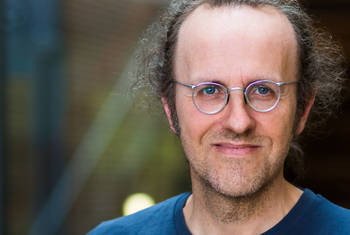Hans-Walter Rix How Can a 3D-Map of Dust Help Measure Distances in our Milky Way?
Hans-Walter Rix is Director at the Max Planck Institute for Astronomy in Heidelberg; he is also an Honorary Professor at the University of Heidelberg in Germany. Upon completion of his PhD at the University of Arizona (Tucsan) he was awarded a Hubble Fellowship, which he took to the Institute for Advanced Studies in Princeton. There, he worked on some of the first Hubble Space Telescope data on gravitational lensing. His fields of research are galaxy evolution and galaxy structure, which he investigates by means of spectroscopic and imaging surveys, currently focusing on the Milky Way as a "galaxy model organism". Rix is a member of the German National Academy of Sciences, the Leopoldina.
Area of Research
Astronomy
since 1999
since 2000
Honorary Professor
Heidelberg University (Ruprecht-Karls-Universität Heidelberg)
1998-1999
Associate Professor
University of Arizona
1995-1998
Assistant Professor/Astronome
University of Arizona
1994-1995
1991-1994
Member
Institute for Advanced Study
1986-1991
PhD
University of Arizona
- Member of the German National Academy of Sciences Leopoldina
- Member of the European Academy of Sciences and Arts
Prizes
- ERC Advanced Grant Award (2013-2018)
Fellowships
- Alfred P. Sloan Fellowship (1996-1998)
- Hubble Fellowship at the Institute for Advanced Study, Princeton (1991-1994)
 © Maximilian Dörrbecker
© Maximilian Dörrbecker
Max Planck Society
"The Max Planck Society is Germany's most successful research organization. Since its establishment in 1948, no fewer than 18 Nobel laureates have emerged from the ranks of its scientists, putting it on a par with the best and most prestigious research institutions worldwide. The more than 15,000 publications each year in internationally renowned scientific journals are proof of the outstanding research work conducted at Max Planck Institutes – and many of those articles are among the most-cited publications in the relevant field." (Source)
Institute
Max Planck Institute for Astronomy
How do stars and planets form? What can we learn about planets orbiting stars other than the Sun? How do galaxies form, and how have they changed in the course of cosmic history?
Those are the central questions guiding the work of the scientists and engineers at the Max Planck Institute for Astronomy (MPIA) in Heidelberg. The institute was founded in 1967, and it is one of roughly 80 institutes of the Max Planck Society, Germany's largest organizations for basic research.
MPIA has a staff of around 290, three quarters of which are working in sci-tech. At any given time, the institute features numerous junior scientists and guest scientists both from Germany and abroad. (Source)
Map
The dust in our Milky Way is the constituent of the cosmic life cycle. It is the substance from which new stars are generated and it is what stars become once they die. Unfortunately, as HANS-WALTER RIX explains in this video, the dust turns distance measurements of stars in the Milky Way into a difficult endeavor, because it dims objects and blocks light from the material behind it. In his project two common methods of distance measurement are therefore used in combination to sketch a 3D map of Milky Way dust: first the parallax, which uses the orbit character of the earth in order to check on the stars’ respective positions, and second, the calculated brightness of stars which allows for an estimate concerning the amount of dust in front of each star. The so created 3D map helps to limit errors in distance calculations due to a feasible dust exclusion, made possible by the localization of dust. The conversion of observed quantities into physical quantities thus becomes possible.
LT Video Publication DOI: https://doi.org/10.21036/LTPUB10369
A Three-dimensional Map of Milky Way Dust
- Gregory M. Green, Edward F. Schlafly, Douglas P. Finkbeiner, Hans-Walter Rix, Nicolas Martin, William Burgett, Peter W. Draper, Heather Flewelling, Klaus Hodapp and Nicholas Kaiser
- The Astrophysical Journal
- Published in 2015









